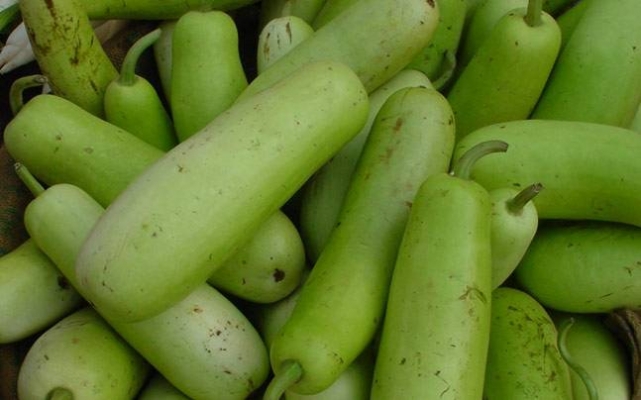Agriculture

Soil
It is grown in variety of soils. It gives best result when grown in sandy loam to loamy soil.
Popular Varieties With Their Yield
Land Preparation
For bottle gourd farming, well prepared land is used. To bring the soil to fine tilth, ploughing followed by harrowing is done.
Sowing
Seed
Fertilizer
Fertilizer Requirement (kg/acre)
| UREA | SSP | MURIATE OF POTASH |
| 70 | 150 | 40 |
Nutrient Requirement (kg/acre)
| NITROGEN | PHOSPHORUS | POTASH |
| 32 | 24 | 24 |
Bottle gourd crop required well decomposed cow dung @8-10ton/acre, Nitrogen@32kg (Urea@70kg), Phosphorus@ 24kg (SSP@150kg) and Potash@24kg/acre (MOP@40kg). Apply well decomposed cow dung, full dose of Potash and Phosphorus, and one-third of Nitrogen, two to three week before seed sowing. Apply remaining dose of Nitrogen in two equal splits. Provide first dose 25-30days after sowing and second dose 40-50days after sowing (i.e. before flower emergence).
Weed Control
To control the weeds, 2-3 hoeings are required at the initial stages of plant growth. Weeding operations are carried out at the time of fertilizer application. Earthing up is also an effective way which should be carried out in rainy season. To control, weed chemically, take spray of Pendimethalin@1tr/acre in 200 Ltr of water, within 48hours after seed sowing.
Irrigation
In kharif season, it does not required irrigation. if needed then provide irrigation. Also, avoid water stagnation in field. Provide proper drainage. In summer season, after sowing, immediate irrigation is necessary. In summer, it required 6-7 irrigations. Apply them with interval of 4-7days.
Plant protection
- Pest and their control:
- Disease and their control:
Harvesting
Depending upon variety and season, crop is ready for harvesting in 60-70days. Depending upon market requirement, medium and tender fruits are harvested. Mature fruits are mostly stored for seed production purpose. Cut the fruits from vines with help of sharp knife. In peak season, picking should be done in every 3-4 days.
Seed production
Keep isolation distance of 800m from other varieties of sponge gourd. Remove diseased plants from the field. For seed production, the fruits are harvested when they get physiologically mature. Three field inspections are required for the production of true to type seed. After harvesting, fruits are dried and then seeds are extracted.





